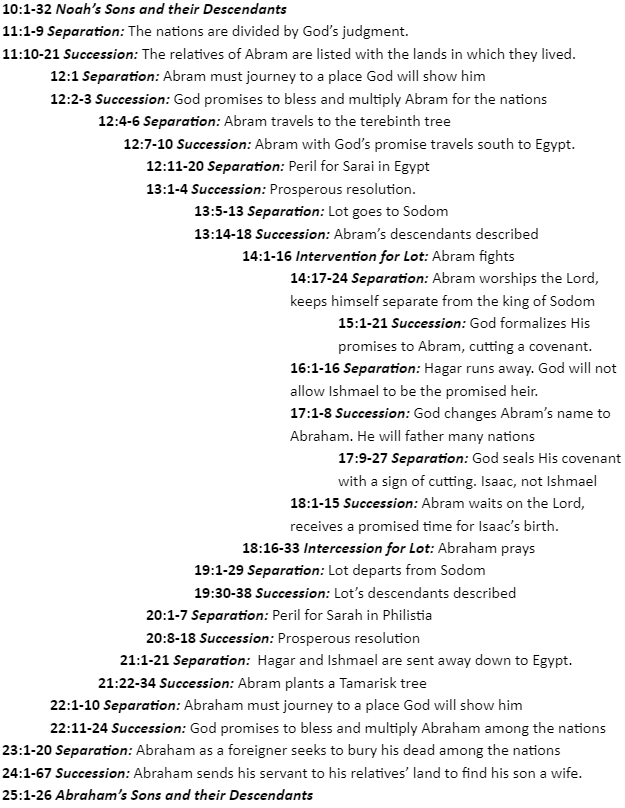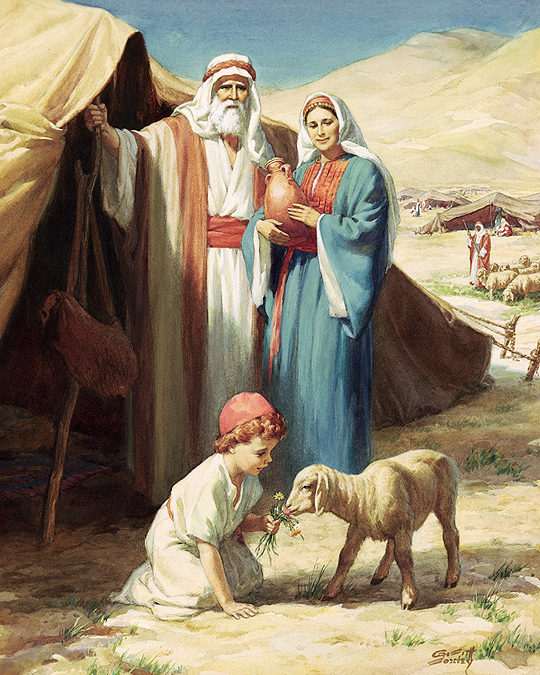The sign of circumcision fits with the promise of the seed, the male heir who will become the new Adam, the Image victorious over the serpent Genesis 3:15. But circumcision and the protoevangelium are also built on the theme of separation. God places enmity between the woman and the serpent, between her seed and the serpent’s seed. There was also a separation, a sifting between sons throughout Genesis 4-9. This sifting corresponds with a careful track of sons through successive generations. These two themes together anticipate the sign of circumcision.
In Genesis chapter twelve Abraham must leave his land, his family, indeed his own father (separation). God promises Abram a people and land (succession). The separation precedes the promise of succession. In chapter thirteen, when Abraham and Lot must part ways, God promises Abram a people and a land—separation and succession. In chapter fourteen Abraham keeps himself from the influence of the king of Sodom. In chapter fifteen God promises Abram a people and land, formalized by the cutting of a covenant. Separation and succession manifest again and again. The separation and succession rhythm actually begins in Genesis 10 and runs through Genesis 25 in a chiastic pattern. The double peak of the pattern focuses on how God cut a covenant with Abram in Genesis 15:1-21 and established that covenant with the sign of circumcision in Genesis 17:9-27. The sign of circumcision speaks to both separation and succession. There is a cutting and removal of the flesh, a separation. There is also a promise revealed in the marriage bed, a promise of a Seed to come through the lineage of Abraham, Isaac and Israel, a succession. These two meanings are emphasized by the consequence of not being circumcised—a man is separated from his people, cut off from the lineage of succession.
It is interesting to note that the separation and succession pattern epitomized in the covenant sign of circumcision is also central to the previous chiastic story structure of Noah. Separation and succession, after all, are metanyms for death and life—which make up the rhythm of Genesis 5. What is central to the Noah cycle is central to the Abraham cycle. The covenants God makes with Noah and Abraham are both expressions of the imago Dei. God details how His servant should relate to Him, to his fellow humans and to the world around him. Loving God supremely, loving others rightly and stewarding the created order responsibly— these relational facets of the imago Dei are in some fashion restored from the fall and in some fashion they reveal the coming Seed, the Image Who will triumph.
The Noah Cycle:

The Abraham Cycle


